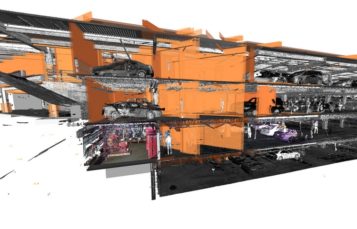
The whys, tactics and what comes next
By Bud LaRosa
The construction industry is enjoying an enormous economic recovery. Many urban centers are dotted with cranes. There are several private and public projects on the drawing board and, last year, Congress passed a $1.1-trillion budget with $1.6 billion going toward the General Services Administration’s construction account. This 300 percent increase includes a doubling of the Department of Veterans Affairs construction budget to $1.2 billion. With projections for growth in 2017 forecasting the recovery to continue, one of the greatest threats that could derail the recovery is the lack of skilled labor.
How Did We Get Here?
There is a lack of skilled construction professionals at all levels including field craftsmen, engineers, superintendents, project management and leadership. The primary reason for the shortage radiates from the recent recession in 2008. During its peak in 2006, the construction industry employed 7.7 million individuals. In the years following, it subsequently lost 2.3 million jobs. Today, construction employment has not yet rebounded to the April 2006 peak (currently 6.6 million – June 2016) yet the industry is experiencing labor shortages. This indicates that 1.2 million (about 15 percent) have left the industry.
Close to half of the 1.2 million workers who left the industry (570,000) are Mexican-born. Increasingly difficult immigration rules for both legal and illegal immigrants have contributed to the reluctance of these workers to want to return. Many immigrants have found that there is work for them both in their home country, where they can stay closer to their families, and further south in places like Honduras and South America, where there are fewer restrictions. In 2007, there were 1.9 million Mexican construction workers in the United States. Now, nine years after the last recession, there are 1.3 million Mexican construction workers.
Age demographics also play a role. In 2006, 18 percent of construction new hires were between the age of 19-25. In 2013, that rate had dropped to 13 percent. The prevailing assumption about the reason for this demographic change in careers is that one must earn a four-year degree to make an adequate living. However, given the massive debt incurred while attending college, coupled with dim job prospects within a graduate’s respective field, this idea is more myth than reality. Today, 17 million college graduates work in fields that do not require a college degree. This trend is likely to continue as the shift has also contributed to an overall decline in training and apprenticeship programs from about 32,000 in 2003 to about 21,000 in 2016.
In addition, about 1.1 million construction workers will retire during the next 10 years – most with a significant amount of experience. This will leave a notable hole in the market.
Tactics for Combating This Shortage
There are several ways that contractors and the industry are combating the shortages. One is through outreach programs to engage our youth (the largest demographic) and women (about half the U.S. workforce but only 9 percent of the construction workforce) to show them that construction is a viable career path. These programs are being utilized in schools, as well as career fairs, and trade associations such as the National Association of Women in Construction.
Robert Petrucelli, CEO and president of the Associated General Contractors of Massachusetts, supports this approach, and has created a “Workforce Development Task Force,” which will analyze and explore ways in which our industry can better communicate the vast opportunities construction careers have to offer. Additionally, he believes outreach should occur across all grade levels from kindergarten through high school, as well as K-12, vocational technical and comprehensive high school students, both suburban and urban populations, veterans and, of course, women and minorities, who are under-represented in the industry.
Retention/development programs are other options that contractors are using to combat the labor shortage. Because many younger workers value self-improvement, contractors are providing Individual development programs offering training to expand employee skill sets. This on-the-job learning can include any combination of formal instruction, rotational assignments and practical training.
Other methods in combating shortages are through the use of emerging technology. Construction companies have been slower to adopt new technologies than those in other industries – something younger demographics don’t respond well to. Those firms embracing technology in the construction process realize that many efficiencies are being derived from its use. Tools like building information modeling, augmented reality, 3-D laser scanning and mobile devices are truly reshaping the industry and helping general contractors and construction managers work more collaboratively and efficiently. Technology has also helped make Lean building, prefabrication and modular construction possible, and new project delivery methods such as Integrated Project Delivery and Highly Collaborative Project Delivery have improved the overall speed and cost of construction projects.
What Comes Next?
According to the results of an industry-wide survey released in September 2015 by the Associated General Contractors of America, an estimated 86 percent of construction firms report trouble finding workers to fill key spots as demand for construction continues to rebound in many parts of the country. The U.S. Bureau of Labor Statistics reflects this as well, as the unemployment rate for construction workers dropped to 4.6 percent (June 2016) – the lowest rate since 2000.
The challenges are great but they are far from insurmountable. The AGC recognizes these challenges facing industry professionals, and must continue to work on behalf of its members to address the underlying issues. Contractors know there is a need to focus on their existing employees – to keep them energized and engaged. Both contractors and the industry must continue to pursue the hearts and minds of the younger workers by staying up-to-date with technology and offering self-improvement training. Removing barriers and focusing on outreach and mentoring will help increase the participation rate.
Staying in touch with technology will also help improve efficiency but, more importantly, the workers entering the industry want to be using this technology, and that demand isn’t going away. Companies that adopt technology will be well poised for the labor force of tomorrow.
Sources: AGC of America, the U.S. Bureau of Labor Statistics and the National Association of Women in Construction.
Robert “Bud” LaRosa is chief business performance officer at Tocci Building Companies. He leads the implementation and execution of all performance metrics, as well as strategic initiatives. LaRosa has also served as chief financial officer since 2012 and is responsible for all financial reporting and risk management.





 Join our thriving community of 70,000+ superintendents and trade professionals on LinkedIn!
Join our thriving community of 70,000+ superintendents and trade professionals on LinkedIn! Search our job board for your next opportunity, or post an opening within your company.
Search our job board for your next opportunity, or post an opening within your company. Subscribe to our monthly
Construction Superintendent eNewsletter and stay current.
Subscribe to our monthly
Construction Superintendent eNewsletter and stay current.